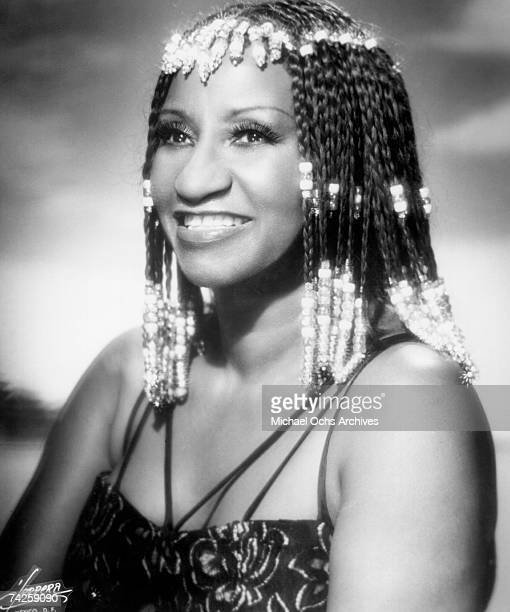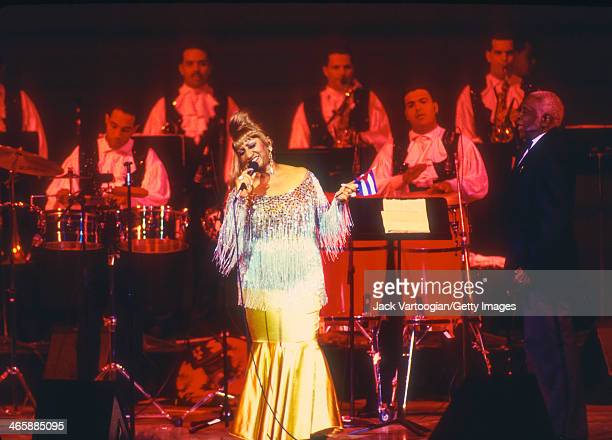Celia Cruz: A look at her controversial career
How controversial was Celia Cruz's career? Almost 20 years have passed since her death. Her incredible talent crossed borders.

- How controversial was Celia Cruz’s career?
- Almost 20 years have passed since her death.
- Her incredible talent crossed borders.
The legacy of Celia Cruz! Almost 20 years have passed since Celia Cruz’s death. She was one of the most important Latina singers in history and won six Grammy Awards, two of them posthumous. Throughout her career, which she began as the vocalist for the group La Sonora Matancera, Cruz enjoyed great popularity thanks to her endless talent and charisma.
She managed to master various musical genres, such as guaracha, rumba, son and bolero. Though she’s best known as a salsa performer, winning a younger audience with hits like La Negra Tiene Tumbao.
Who was Celia Cruz?

Celia Cruz’s legacy began in 1925 in Cuba. Úrsula Hilaria Celia de la Caridad Cruz Alfonso, better known simply as Celia Cruz, was born on October 21, 1925 in Havana, Cuba. She spent her childhood in a house where she lived with at least 14 other children, including her three siblings: Dolores, Gladys and Bárbaro.
From a very young age, she had a taste for music and learned numerous songs, including some from Santeria, a fact that upset her father because their family was Catholic. For a long time, Celia’s parents suggested that she dedicate herself to teaching, but some of her aunts and other relatives saw creative potential. In 1947 she began to formally dedicate herself to music and singing, appearing in cabarets like the Tropicana and the Topeka.
Her arrival in the United States

In 1947, Celia Cruz joined the ranks of singers at the Tropicana, where a year later she was discovered by Rodney Neyra, founder of the group Las Mulatas de Fuego, with whom she toured Mexico and Venezuela. In 1950, Cruz joined the group La Sonora Matancera as lead singer, where she met her husband, the trumpeter Pedro Knight.
During the Cuban Revolution Cruz’s professional and personal life took an unexpected turn. Given the Cuban government’s refusal to allow artists to perform internationally, especially in the United States, she was banned from returning to Cuba again. She made her home in New York. There, in the 1970s, her career skyrocketed and she performed with some of the most prominent artists of the time. Celia Cruz lost both of her parents and wasn’t allowed to set foot back in Cuba.
Celia Cruz’s controversies

Perhaps one of the biggest controversies involving Celia Cruz was only revealed a year after her death when the Miami Herald reported on a declassified document from the US State Department linking her to the Popular Socialist Party of Cuba.
That document stated that the United States embassy in Cuba had denied the singer an American visa between 1952 and 1955. It also alleged that Cruz had supposedly taken advantage of her trips outside Cuba to share propaganda on behalf of the party’s general secretary, Blas Roca. Her widower, musician Pedro Knight, declared that he was unaware of these accusations, and that Cruz never mentioned political issues to him.
The singer’s legacy

Celia Cruz’s legacy goes beyond music. In fact, she has gone beyond our planet. On September 29, 1989, an asteroid was discovered and named Celiacruz, in honor of the 70-year career of the Cuban performer. Just two years earlier, she was honored with a star on the Hollywood Walk of Fame and with several honorary doctorates from prestigious universities such as Yale and the University of Miami.
The world saw Celia Cruz shine for seventy years, which gave rise to several tributes, including an exhibition called ¡Azúcar! at the National Museum of American History. She also received her own postage stamp from the United States Postal Service.
 Related post
Related post





